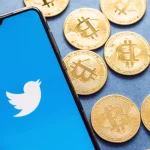Inflation tracked by the U.S. Consumer Price Index (CPI) rose 9.1% in June, accelerating from May’s 8.6% pace to a fresh 40-year high, and exceeding economists expectation.
Bitcoin’s price fell 4.2% to about $19,200 in the minutes since the report was released. Speculation might be that the Federal Reserve will have to keep tightening monetary conditions aggressively to tamp down inflation.
Cryptocurrencies across the board had been trading in the green Wednesday in the hours leading up to the CPI release, with bitcoin (BTC) trading at $19,786 in the early hours.
The cryptocurrency, which is supposed to serve as an inflation hedge for some traders, is down nearly 70% since inflation started accelerating in October 2021.
The June price data might end up representing a peak in the inflation rate, given that oil and gasoline prices have declined.
“There are certainly positive signs that would indicate the worst is behind us,” said Jonathan Silver, founder and CEO of Affinity Solutions, a global insights firm tracking consumer purchasing habits.
“The job market remains strong, which is putting money in people’s pockets; however, price increases are still outpacing people’s paychecks. Hopefully this trend will reverse itself as inflation reaches its peak and begins to dissipate. Our purchase spending data suggests that this is the direction we are headed,” he said.
Federal Reserve implications
The Federal Reserve’s monetary-policy panel, the Federal Open Market Committee, is scheduled to meet on July 26-27 to discuss further monetary tightening, and the fresh inflation high could give central bankers the green light for another aggressive rate hike, since they have prioritized the battle to stabilize prices over any push for economic growth at this point in time.
“Is there a risk we would go too far? Certainly there’s a risk,” Fed Chair Jerome Powell said during a recent conference at the European Central Bank forum. “The bigger mistake to make – let’s put it that way – would be to fail to restore price stability.”
According to one widely-used definition, two consecutive quarters of slowdown in gross domestic product (GDP) would mean that the U.S. is in a recession, but Powell and other central bankers point to the strong labor force, which shows signs that the economy is still very strong.
“Spending over the coming months will be contingent on a variety of key factors including a potential Covid resurgence, the war in the Ukraine, if supply chain pressure eases, as well as the effect of rate hikes on consumer spending,” Silver said. “It will be interesting to see what happens after the summer hangover recedes and we get a clearer picture of both the state of the economy, the war in Ukraine and Covid.”







